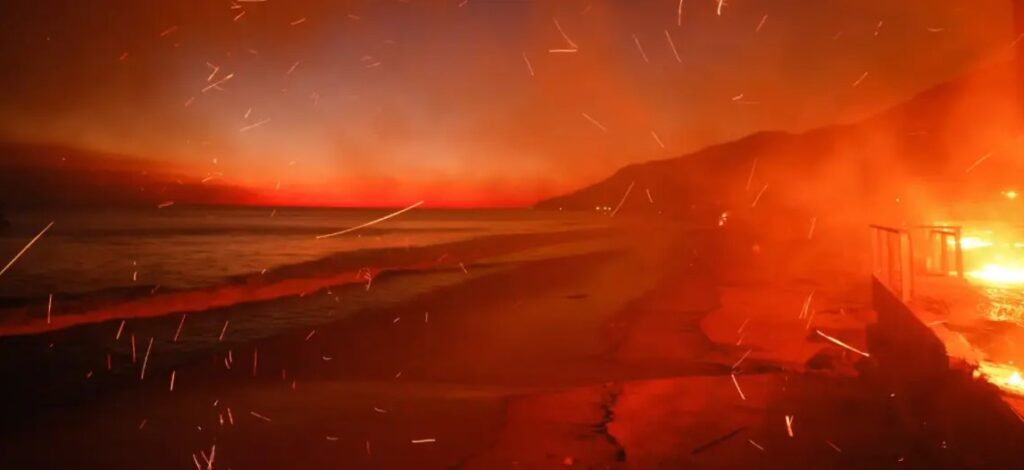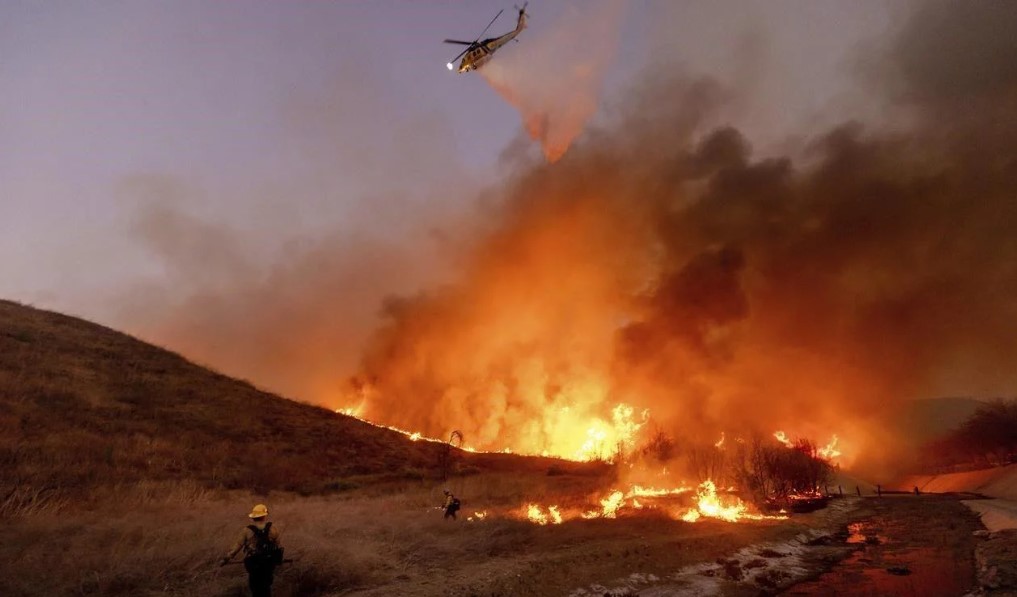California Wildfire Breaks Outside of LA: Latest Updates, Causes, and Impact
Insight
On January 14, 2025, a fierce wildfire erupted in Ventura County, California, near Los Angeles. This wildfire, termed the Auto Fire, has consumed almost 61 acres and is causing significant worry among local officials and residents. This blog post delves deep into the wildfire’s origins, its effects on the community, and the current firefighting measures.
Origins of the California Wildfire
The Auto Fire was detected at approximately 6:50 p.m. local time in the Santa Clara River bottom. While the specific cause remains under scrutiny, it’s believed that the intense Santa Ana winds, gusting between 45 to 70 mph, have played a crucial role in the rapid spread of the fire. These gusts, coupled with low humidity and prolonged drought, have created prime conditions for such a disaster.
Role of Santa Ana Winds in Spreading the Fire
Meteorologists attribute these winds to a seasonal phenomenon that amplifies wildfire risks in Southern California. Originating from high-pressure zones over the Great Basin, these dry and warm winds move southwest, drying vegetation and creating a perfect storm for wildfires as they accelerate through mountain passes.
Meteorological Insights on Fire Risk
Local weather experts have noted that the combination of high temperatures, dry conditions, and strong winds are a recipe for disaster. Historical data indicates that such conditions have been the primary drivers of some of the most destructive wildfires in California’s history.
Impact of the Auto Fire on the Community
The fire’s repercussions on the community are profound. Although no structures are currently at risk and evacuation orders have been lifted, the blaze has ravaged the natural landscape, affecting essential chaparral and grassland ecosystems. Local inhabitants are deeply concerned about the long-term environmental consequences and the looming threat of future wildfires.

Images : Kind Courtesy : AP
Evacuation Orders and Public Safety Measures
In response to the fire, authorities initially issued evacuation orders to ensure public safety. These orders were later lifted, but residents are advised to remain cautious and prepared for any changes in the fire’s behavior.
Damage to Natural Landscapes and Ecosystems
The wildfire has significantly impacted the natural landscape, burning through chaparral and grasslands that are home to diverse wildlife. The loss of vegetation could have long-term effects on local ecosystems and biodiversity.
Fire Containment Efforts in Ventura County
Efforts to control the California Wildfire are in full swing, with firefighters from Ventura County Fire Department, Ventura City Fire, Oxnard Fire, and Federal Fire Ventura County working round the clock. As of January 15, 2025, about 47% of the fire has been contained, with a focus on extinguishing hotspots and preventing the fire’s spread. The National Guard is also on the ground to aid evacuation and prevent looting.
Advanced Firefighting Techniques
For California Wildfire , Firefighters are employing advanced techniques such as controlled burns and aerial water drops. Helicopters and planes are actively dousing the flames with water and fire retardant, while ground crews are creating firebreaks by clearing vegetation and digging trenches.
Support from the National Guard
The National Guard has been deployed to assist with firefighting efforts for California Wildfire, evacuation, and securing affected areas. Their presence is crucial in providing additional manpower and resources.
Environmental and Health Concerns from the California Wildfire
The wildfire poses significant environmental and health risks. The smoke and particulate matter are immediate and long-term health hazards, particularly for those with respiratory issues. The Los Angeles County Department of Public Health has issued warnings and advised residents to minimize smoke exposure and seek medical help if necessary.
Health Risks from Smoke and Particulate Matter
wildfire outside of LA , Smoke from wildfires contains harmful pollutants that can aggravate respiratory conditions and cause other health issues. Residents are advised to stay indoors, use air purifiers, and wear N95 masks when outside.
Air Quality Alerts and Public Health Recommendations
The California Air Resources Board is closely monitoring air quality and has issued alerts. Public health authorities recommend minimizing outdoor activities and keeping windows and doors closed to reduce smoke exposure.
Economic Impact of the Wildfire
The financial impact of the wildfire is expected to be substantial, though it is still being assessed. Damage to natural resources, potential property damage, and the costs of firefighting efforts are likely to impose significant financial burdens on the local government and residents. Prolonged drought conditions and high winds have complicated control efforts.
Financial Burdens on Local Government and Residents
The costs associated with firefighting, property damage, and recovery efforts are significant. Local governments may face budget strains as they allocate resources to address the wildfire’s aftermath.
Effects on Local Businesses and Agriculture
Businesses, especially those in agriculture and tourism, are experiencing economic losses. Crops may be damaged, and tourist attractions could face temporary closures, affecting the local economy.
Community Support and Relief Efforts
In response to the California Wildfire, the community has rallied together to support those affected. Fundraising campaigns have raised over $100 million to assist families, communities, and businesses impacted by the disaster. Nonprofits and local organizations are also providing on-the-ground relief, offering food, shelter, and medical assistance.
Fundraising Campaigns and Donations
Crowdfunding platforms and charitable organizations have launched campaigns to gather donations for those affected by the wildfire. These funds are crucial for providing immediate relief and long-term recovery.
Volunteer Efforts and Emergency Shelters
Volunteers from nearby areas and states have joined the relief efforts, offering manpower and resources. Emergency shelters set up by organizations like the American Red Cross provide a safe haven for displaced residents.
Long-Term Recovery and Wildfire Preparedness
The recovery journey will be long and arduous, but the community’s resilience is already evident. Efforts to restore damaged ecosystems, rebuild infrastructure, and support affected residents are underway. State and federal agencies are collaborating to provide financial aid and resources for recovery.
Restoring Damaged Ecosystems and Infrastructure
Restoration efforts focus on replanting vegetation, repairing damaged infrastructure, and supporting California Wildfire recovery. These actions are vital for rebuilding the natural environment and community.
Importance of Community Awareness and Preparedness
Authorities emphasize the importance of being prepared for future wildfires. This includes creating defensible spaces around homes, maintaining emergency kits, and developing evacuation plans. Education programs aim to inform residents about wildfire risks and safety measures.
Conclusion
The California wildfire outside of Los Angeles underscores the ongoing challenges posed by wildfires in the region. As investigations continue and efforts to contain the blaze progress, it’s vital for residents to stay informed, prepared, and supportive of one another. With collective efforts, the community can rebuild and emerge stronger.
Also Check : Stimulus Check 2025
Check Wildfire tracker

